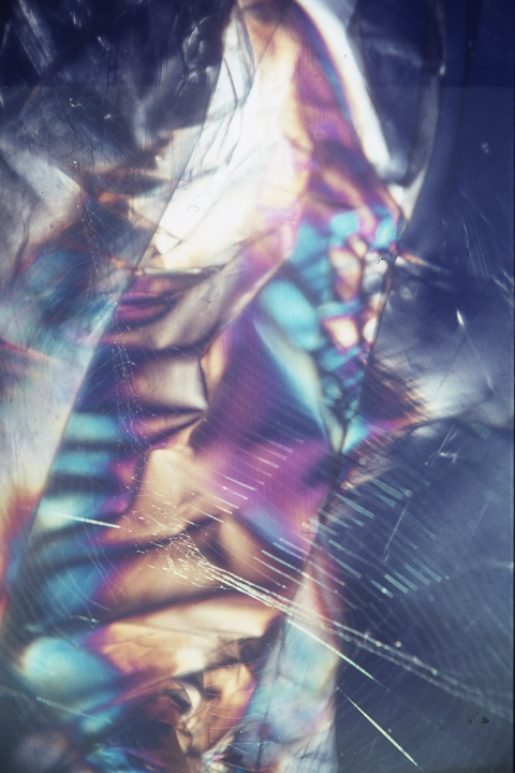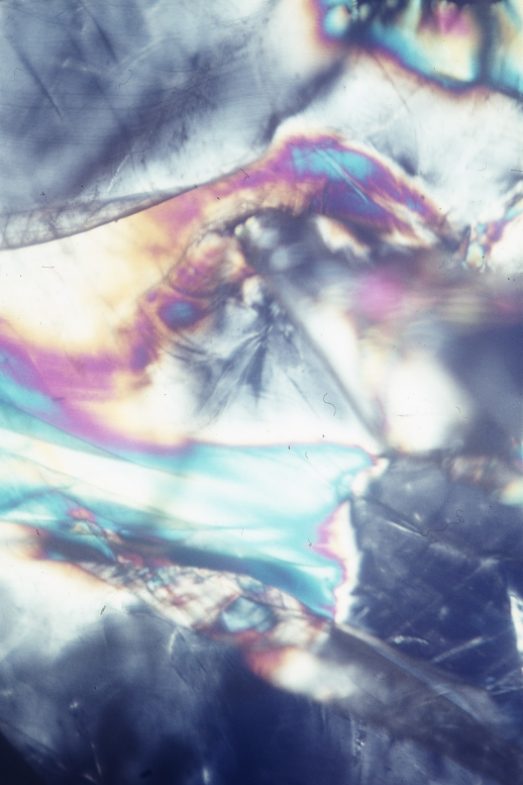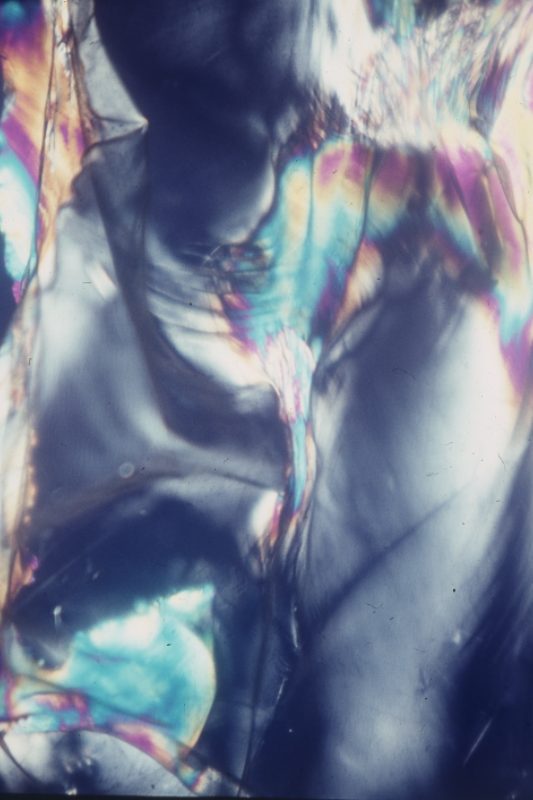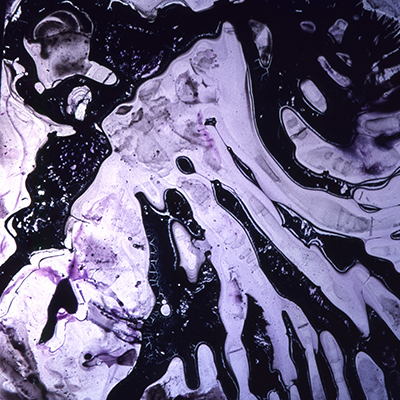
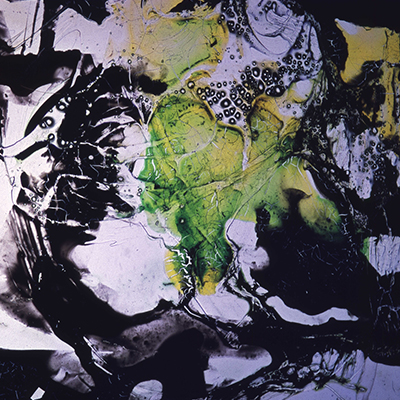
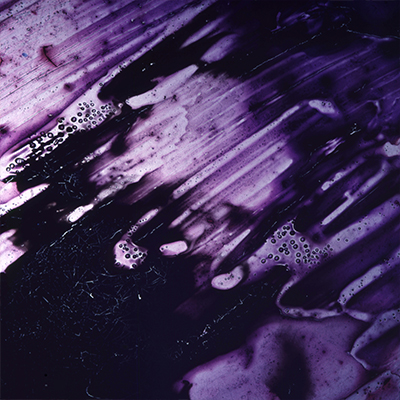
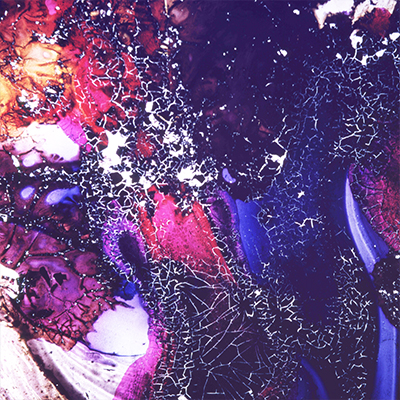
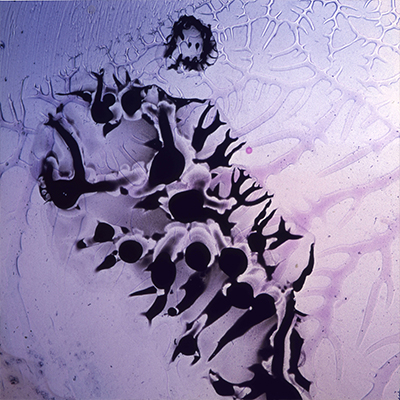
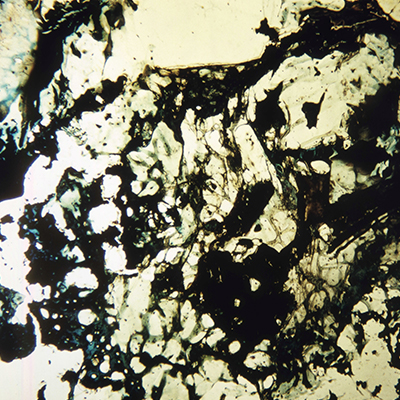
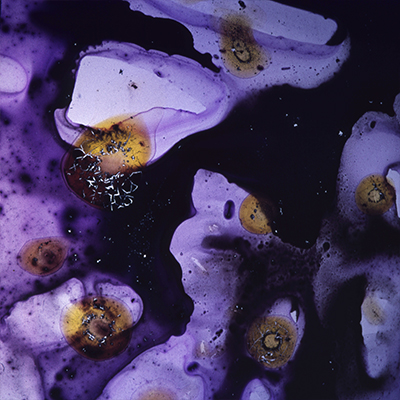
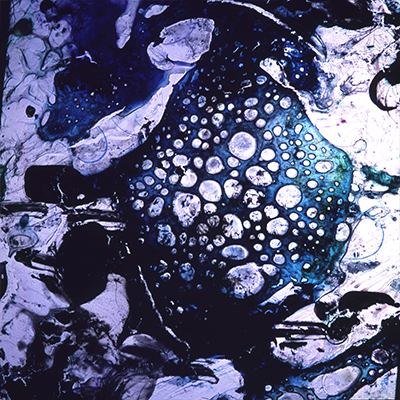
Micro Paintings (1961) and Polarograms (1963)
Even as a student of theoretical physics, Herbert W. Franke began to take an interest in the aesthetic effect of natural structures and thought about the possibilities of how the aesthetic patterns visible there could be generated analytically for artistic purposes with the help of mathematical methods or scientific machines. This led him to various experiments with light, but he also investigated materials for artistic applications – such as superimposed transparent foils for moiré effects or even plastic tapes. These early series of generative photography were primarily characterized by analytical studies in the context of mathematical structures. But with the advent of computers, Franke also increasingly focused on „random processes“ as a purposefully applied design principle. The 6×6 slide series entitled Mikrogemälde (Micro Paintings) where experimental tests between science and art. The purpose was to examine structures, primarily characterized by purely natural random processes. Herbert never called them “artworks” in his own context as they had not enough “generative” input by the artist but were images of nature.
The series was created through macro-photographic experiments by applying glue mixed with watercolors on glass slide. The colored fluid was „sealed“ with a second glass after drying.
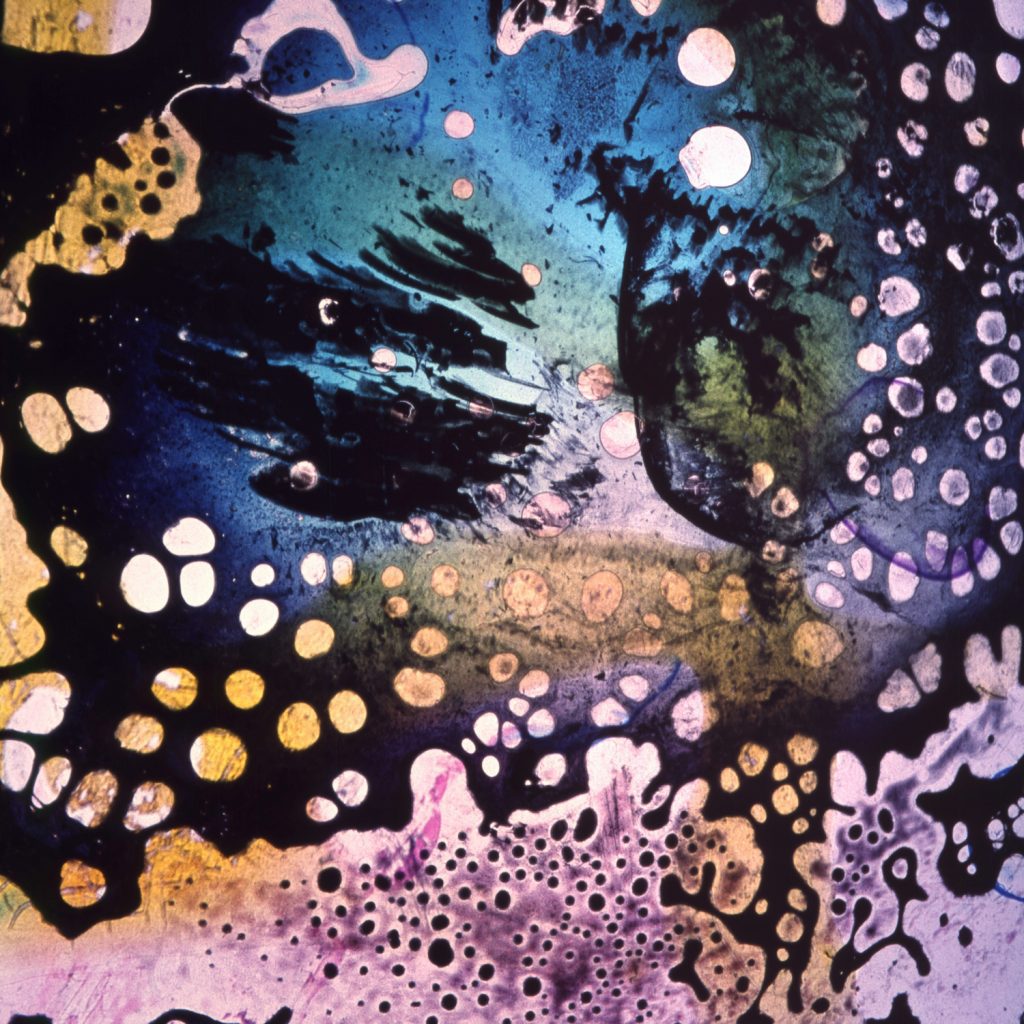
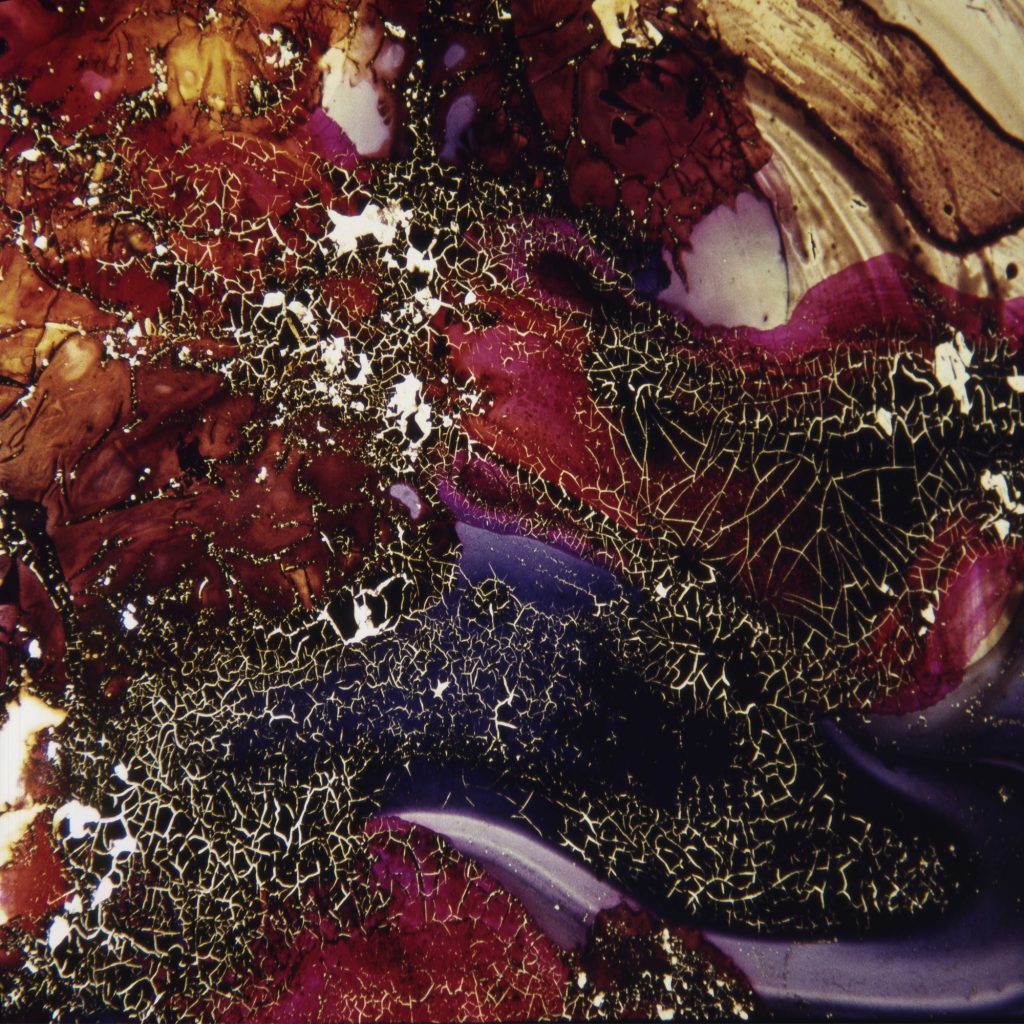
Another material Franke experimented with artistically in a small, completely unknown series was stretchable plastic film – a completely new development in the chemical industry at the time. Franke was very fascinated by polymer chemistry, because it involved substances invented by man and produced chemically exclusively in the laboratory, materiel taht does not exist in reality. The subject interested him so much that he also tried to write a book about this polymer chemistry at that time. He succeeded in winning the well known Stuttgart Spectrum publishing house, where the popular book Kunststoffe erobern die Welt (Plastics Conquer the World) was then published in 1966.
His artistic Polarograms were created like this: A stretchable plastic skin was pulled over the glass plate of a slide, a second film over the lens of a projector. In combination, this led to colored polarization effects that were captured photographically. In this case, however, as with the micro-paintings, the artist’s creative intervention was not very great, which is why these experiments also resulted in only a small series of images.
